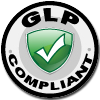Microbial Identification Service: Applications
PCR and 16S rRNA gene sequencing can detect and identify as-yet-uncultured organisms in clinical specimens or environmental samples.
In clinical settings, 16S rRNA gene sequencing can be used to identify novel pathogens as well as organisms with unusual phenotypic characteristics or antibiotic susceptibility patterns or both, identify slow-growing organisms, identify poorly stained microorganisms, identify microorganisms that are poorly reactive biochemically and show aberrant biochemical characteristics, and explain the discrepancy between phenotypic identification and the antibiotic susceptibility profile of a microorganism. These techniques have also been used for identifying and characterizing pathogens in infectious diseases with a very good diagnostic accuracy.
16S rRNA Sequencing for Bacterial Colony
Single Bacterial colony — A single colony is collected for PCR amplification
PCR — 16S rRNA genes are amplified specifically due to gene-specific primers via the PCR — Resulting PCR product is then run through agarose gel electrophoresis
Database Comparison and Identification — Resultant sequences are compared to a genomic library to identity match or novelty of microorganism in question
In environmental settings, by integrating 16S rDNA sequencing of bacterial pathogens with conventional microbiologic methods, isolates that lack a definitive identification after biochemical testing have shown to yield genus- or species-level identifications. The knowledge gained through this identification is extremely relevant in the context of environmental bacterial species (present in water or soil).
The 16S rDNA sequencing-based approach has diverse applications, for example in archeology to identify ancient bacteria, or in food regulation and the food industry to differentiate between pathogenic and non-pathogenic strains of interest. Furthermore, the approach can also aid in assessing the microbial diversity residing in arthropod vectors of medical importance, which is crucial for monitoring endemic infections, surveillance of newly emerging zoonotic pathogens, and unraveling the associated bacteria within their hosts—information of epidemiological and ecological significance.
We can provide an immediate price quote (contact e-mail: info@altogenlabs.com). Please note that experimental details will help us provide an accurate quote and timeline estimate.

see also:
What is Microorganism Identification? Method Description | Scientific Background: Specific 16S rRNA Regions | Bacterial Analysis: 16S Sequencing | Microbial Identification Service: Applications
